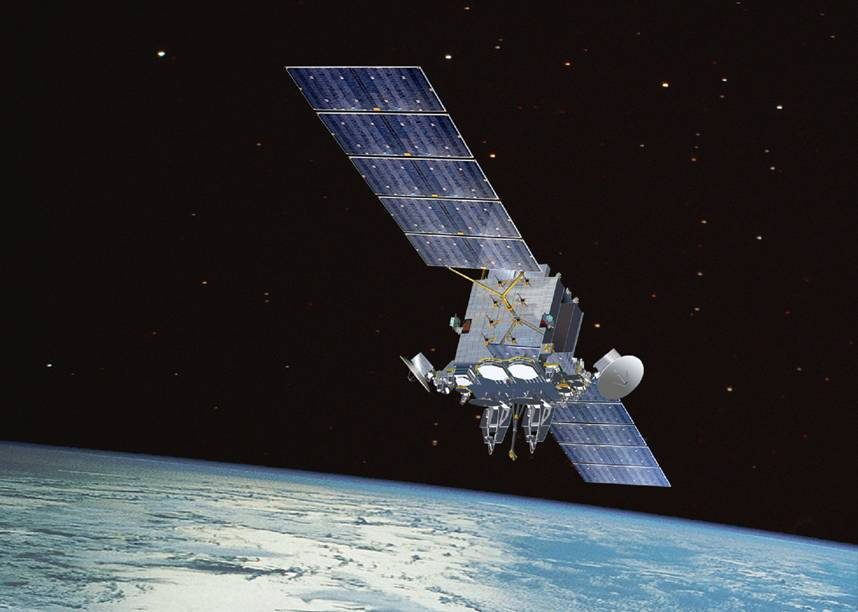WASHINGTON — For those unfamiliar with military space operations, the words “space warfare” conjure up pilots manning Millennium Falcons fighting among the stars or missiles from the heavens targeting bad guys with scars, masks and foreign accents.
In reality, the militarization of space is a little less like Hollywood and a little more like Silicon Valley.
On a recent visit to the Pentagon’s new secretive space center in Colorado, Defense Secretary Ashton Carter called on the military and intelligence space community to join the fight against the Islamic State.
Carter told reporters last week that the Joint Interagency Combined Space Operations Center was moving beyond war games into real-world operations in current conflicts.
“We need them to work right now on problems of space’s role in conflict — first of all, because we are in conflicts today,” he said. “I’ll just remind you that we are in the counter-[Islamic State] fight, and I have instructed our space community to join the fight.”
But using space capabilities in military action is not as futuristic as you might think, military and space experts say.
“I don’t think he meant a kind of special space weapon or anything like that… It’s not like what you see in movies,” said Victoria Samson, a former researcher at the Riverside Research Institute who worked with the U.S. Missile Defense Agency. “We’re already in war with insurgent groups on the ground, on the sea, in the air, and then in space.”
What Carter was implying, she and other experts agree, is stepping up collaboration between the military and intelligence agencies to expand their existing space capabilities to help deal with extremist organizations on Earth.
“As far as anybody knows, there aren’t any things in space that can be directly used to attack things on the Earth. These are all space capabilities that enhance or support military activities on Earth,” said Brian Weeden, technical adviser on space operations at the Secure World Foundation, where Samson also works. He also is a former U.S. Air Force officer who specialized in space and intercontinental ballistic missile operations as part of the U.S. Strategic Command’s Joint Space Operations Center.
“Really what (Carter) was talking about was ensuring that the U.S. military space community and the national security space community are both using their capabilities to help with the fight against ISIS.”
So what capabilities is Carter talking about?
We blindly follow it in our cars, phones and computers, but GPS was originally developed by the Defense Department for military applications rather than finding the nearest bar or bus stop.
“The vast majority of bombs and missiles and things that the military is using against ISIS are guided by GPS, which helps make them much more accurate than the old style of dumb bombs,” Weeden said.
GPS is a necessity for precision-guided munitions and drones.
“Satellites are integral to the fight against ISIS, because the drone program is satellite-controlled,” added Roger Harrison, former director of Air Force Academy’s Eisenhower Center for Space and Defense Studies.
Satellite-supported intelligence gathering is another space capability that has potential in counterterrorism. Using satellites to collect intelligence and to conduct surveillance isn’t a new phenomenon, but using them to more actively help troops on the ground is, experts say.
“The military and intelligence community has a lot of satellites that are used to take pictures and collect intelligence. Traditionally a lot of those were not being used to support the actual troops that were in combat. They were being used for strategic things. They were being used to provide warning about potential nuclear attacks; they were used to provide intelligence that went to the president,” Weeden said. “But there’s been a push over the last 15 years to say, ‘Look, we need to figure out ways to take these capabilities and make them more useful for fighting the wars that we’ve been fighting against al-Qaida and now other extremist groups.’”
While official references to specific examples are hard to come by due to classification restrictions, Weeden said using space to help troops fighting ISIS would most likely involve satellite-enabled signals intelligence and reconnaissance.
That means troops could use cameras to generate images the human eye cannot, he said.
“Most people think of satellites as only providing imagery in the visible bands we can see with our eyes,” he said. “Satellites can also sense parts of the spectrum outside of the visible.”
Some satellites use hyperspectral imagery to see into the ultraviolet and infrared spectrums, an existing space capability now reserved for the government’s upper echelons, Weeden said. But if Carter’s call to arms succeeds, troops might soon be able to use those “smart eyes” directly to locate and identify targets they cannot see, in real time.
Photo at top: The Advanced Extremely High Frequency, or AEHF, system is a joint service satellite communications system that provides survivable, global, secure, protected and jam-resistant communications for high-priority military ground, sea and air assets. Advanced EHF allows the National Security Council and unified combatant commanders to control tactical and strategic forces at all levels of conflict through general nuclear war and supports the attainment of information superiority. (U.S. Air Force)

